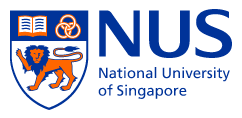Progress in device simulation of plastic solar cells
12 June 2012. ONDL scientist Bo LIU reports the latest plastic solar cell device simulation efforts at the ONDL that reveals new fundamental insights into their behavior, at the International Conference on Simulation of Organic Electronics and Photovoltaics (SimOEP12). “The simulation is based on well-known diffusion-drift equations. However some of the parameters can now be independently measured or experimentally “fixed”. The excellent agreement with measurements that we have now achieved provides confidence in the model, which leads to confidence in predictions of device characteristics when the device structure is altered,” says Liu. One of the most important parameters that can now be fixed is the donor–acceptor morphology, which can be controlled at the ultrafine length scale with phase contiguity, made possible by a recent advance in crosslinking methodology made at the ONDL in collaboration with Cambridge researchers. Another device parameter that has been directly measured for the first time is the built-in potential. Amongst the new insights that have thus been achieved includes how the power-conversion-efficiency landscape varies with photoactive layer composition and thickness, and the role of optical interference, asymmetric carrier mobilities, carrier recombination, and injection boundary conditions in determining the optimal structure for plastic solar cells.
